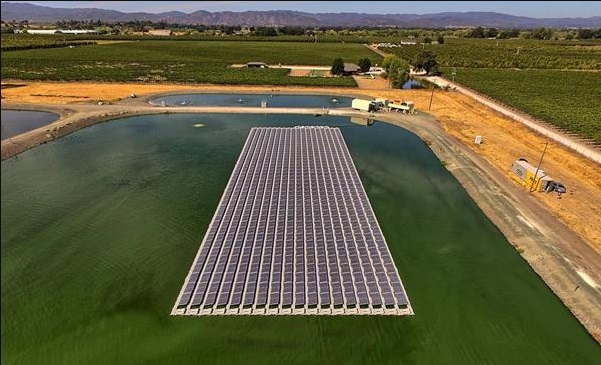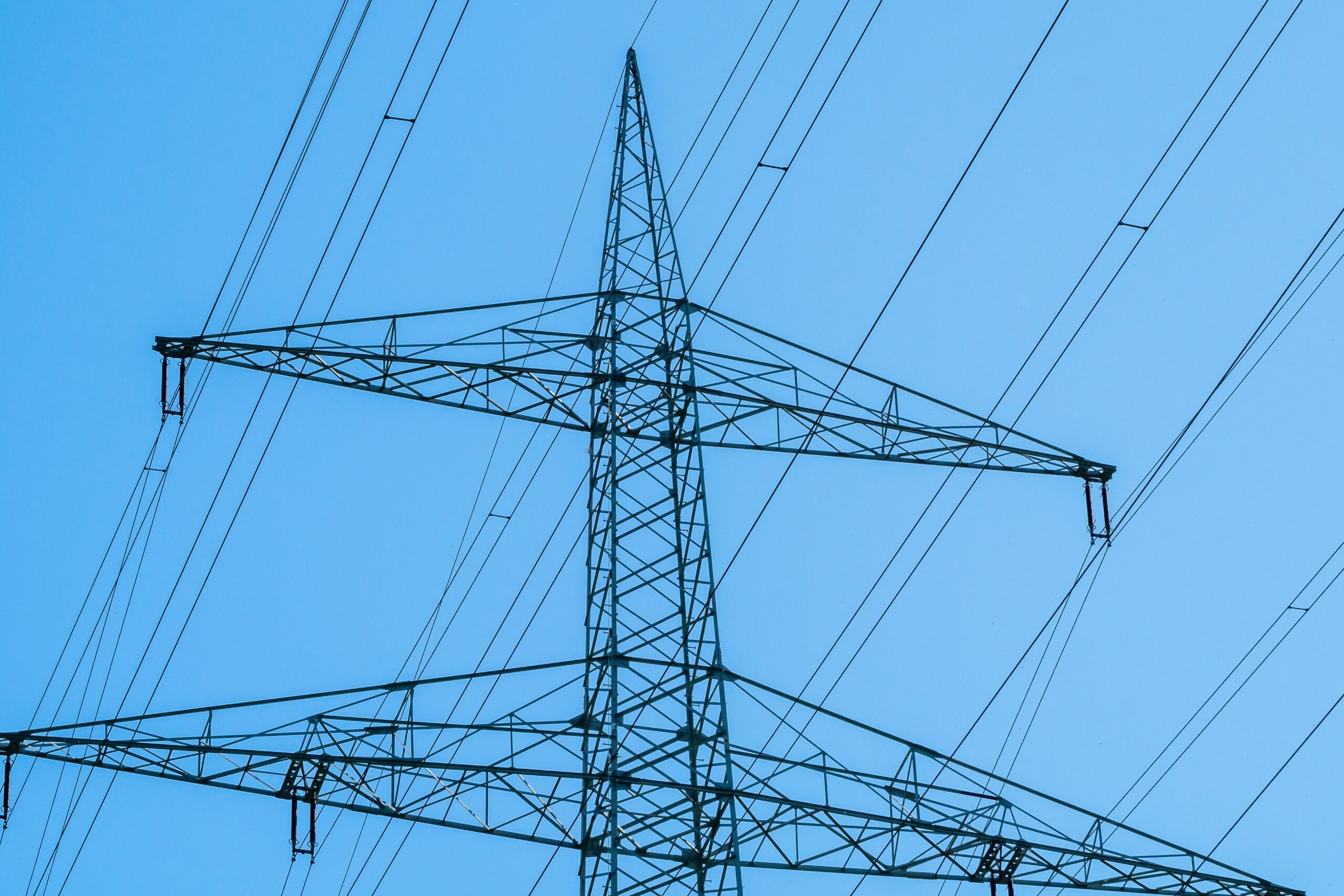Did you visit a beach over the summer? Did you know there are opportunities for clean power from ocean-based sources?
You may be surprised to learn the potential of largely untapped forms of marine renewable energy technology. If you’ve heard of offshore wind power, how about tidal energy and wave power? Floating solar? Here’s your primer!
Why go offshore to develop renewable energy?
As anyone who has their own solar panels installed knows, solar only delivers energy during the day. Solar production at every scale and location varies with conditions and stops daily at nightfall. Wind also changes, an infinite resource providing reliably intermittent energy, which can increase or reduce in strength unpredictably. Looking at a wind resource map like the one below, it’s easy to see where you wouldn’t want to put a wind farm, but you might be tempted to use certain areas along ridges or plains that look promising. However, this map only graphs the average annual wind, so don’t be misled. Places where the wind doesn’t blow much in the winter or summer may or may not be windy enough to locate an economic wind farm.
Offshore wind is more like the excellent ridgeline wind locations, with consistent and strong breezes that make energy production more forecastable. By going about 10 miles out from the shore, off the coast of Virginia Beach, for example, the continental shelf is relatively shallow and flat, lending itself to securing tall wind turbines.
If ocean breezes are a good energy source, why not tides or waves too? Tidal power is attractive in theory, since you could use the heavy saltwater to turn turbines with 832 times the force of air, and the tide flows 4 times a day. But, it peaks at times that are misaligned with energy consumption, and has very specific site requirements, so it’s not commercial yet.
Wave energy has had its own serious challenges, including parts failing in the corrosive ocean water, and years spent in the expensive search for designs that can weather storms without needing maintenance. Unlike wind technology, the many companies in the field are all competing with different technologies without a clear idea of what is best, with the possible exception of the two frontrunners: Wave Roller’s small scale device in Portugal which operated continuously for over a year before winning a grant to allow a scaled up version to be built, and Eco Wave Power’s innovative units that are mounted to existing man-made structures like piers and breakwaters, soon planned to be expanded from a pilot in Gibraltar that powers about 100 homes to several projects of that size in Tel Aviv.
Almost forgot to mention “floatovoltaics!” Solar panels installations can be built on buoyant platforms over calm water, like lakes or reservoirs. Pros range from reducing evaporation of the water supply to lessening algae blooms and promoting more dissolved oxygen in the water for the wildlife, plus choosing to float the panels can be preferable to building on valuable land needed for farming or other uses. The presence of water below the solar panels cools the modules and extends productive life. Cons are mainly the cost which is likely to come down as floating solar catches on. If you haven’t seen pictures of existing floating solar projects, mainly supplying power to big industrial facilities or cities, check them out here.
 The Ciel & Terre Hydrelio Floating Solar Power System installed at the Kelseyville County Waterworks, Dist. #3
The Ciel & Terre Hydrelio Floating Solar Power System installed at the Kelseyville County Waterworks, Dist. #3
As with other technologies, it would restrict or prevent the area from being used for other purposes, so fishing and navigation through the area would have to be discussed among local parties to reach agreement.
Wait, could you see offshore windmills from the beach?
Barely visible through the haze during the warm months of the year, the distant wind turbines ten miles away would appear tiny viewed from the beach, about half the size of your thumbnail held at arm’s length to the horizon. A high voltage transmission cable would be used to connect the system, and it would theoretically be possible to interconnect offshore wind farms from different eastern states into a single backbone to move power where it is needed. By consulting with the shipping industry and Navy early in the process, sites can be selected that don’t interfere with other essential activities, making offshore placement of a wind farm more accessible than some of the prime land-based locations. Unlike drilling for oil offshore, there is no potential of massive leak or spill from the construction or operation of offshore wind farms. There is also no seismic testing of the ocean floor, which would endanger wildlife.
The benefits of offshore wind
In the US, we wouldn’t need to jump into an all-out race to build offshore wind to begin to reap the benefits. A report by the ocean advocacy organization Oceana shows that just by committing to a gradual process to grow out use of offshore wind over the next 20 years, 200,000 lifetime project jobs would be created in the US. This assumes no construction where the water depth is over 60 meters, as deepwater wind turbines construction technology doesn’t yet exist, and that nothing be developed within 3 miles of shore out of concern to preserve the viewshed. Once in place the pylons and foundations of the offshore turbines can play host to shelled ocean animals, something like an artificial reef, so if anything the quality of the water and by extension the local tourism economy of the area would be helped rather than jeopardized by wind.
Wind development is friendly to hatcheries, aquaculture, and seafood processing/seafood markets, which total a GDP of $1.1 billion in Virginia alone. It is also not opposed by the military bases in Hampton Roads and once operational off the coast of Virginia Beach, as planned by 2027, will coexist with annual surfing championships, bird migrations, and nearby Kiptopeke State Park and Back Bay National Wildlife Refuge.
https://oceana.org/wp-content/uploads/sites/18/offshore_energy_by_the_numbers_report_final.pdf
Cost controversies: Offshore wind in Virginia
After more than 15 years of serious consideration and study, offshore wind off Virginia’s coast may now actually be close to getting built, now that the State Corporation Commission has approved it and the Virginia General Assembly gave legislative approval needed for Dominion Energy Virginia to go forward.
Dominion, the utility, will also be the engineering, procurement and construction contractor, instead of working with one or more other firms through a PPA. Clean Virginia, an advocacy organization with the stated aim to fight corruption and increase community control of Virginia energy politics, has pointed out to the SCC that so far all states developing offshore wind have used PPAs or other third-party financing tools. Such mechanisms would, Stephen Haner argues recently in the Jefferson Policy Journal, help mitigate the cost Virginia ratepayers bear, and insulate them from risks inherent in energy construction off the coast.
In the wake of the global pandemic, there are new factors to stretch the realistic timeline for completing offshore wind in Virginia even longer. Labor, materials, and schedule conflicts are occurring in many industries, let alone for a wind energy project. Complicating all this where Virginia is concerned, the Siemens Gamesa Renewable Energy brand wind turbine that Dominion’s Virginia project proposes to use a prototype of which only one is in use (in Denmark, on land) and some component designs are yet to be selected (monopile, transition pieces, etc.) Plus, there’s a law called the Jones Act which says that any ship transporting goods between US ports must be built in the US, and the only vessel large enough to be used for this job which complies is the Charybdis, and is has two other projects on its list before it becomes available for Virginia. The total budget is $9.65 billion, to cover all 176 turbines and transmission, which is a big piece of the project. There have been cost overruns and delays on two recent Dominion transmission projects.
We’d love to see offshore wind increase here in the US, as places like Denmark get up to half their energy at some points during the year from wind.
A wide variety of clean energy sources are needed to decarbonize and reach 100 percent renewables. Meanwhile, we’ll continue rustling up solar panels for homes and buildings here on land!




